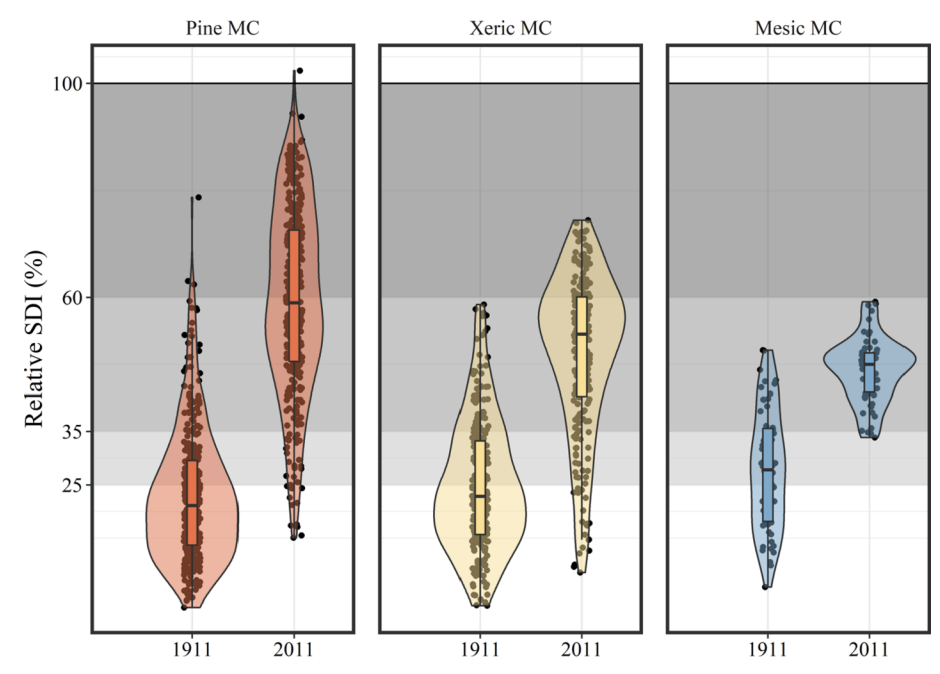In frequent-fire forests of the western US, forest restoration goals often focus on promoting resilience to disturbances such as wildfires and climate change; however, resilience is often discussed in broad terms. Clear definitions and quantified metrics are critical for determining management objectives and evaluating the effectiveness of proposed treatments in meeting restoration goals to promote forest resilience. Relative stand density index (SDI) provides a useful, management-relevant measure of tree growth, vigor, and competition, which is a key foundation of resilience.
In North et al. (2022), we used relative SDI data to compare historic forests to contemporary forests. Historic SDI showed forests with large fire-tolerant trees had extremely low density where inter-tree competition was very low or absent.

The results demonstrates that current fuels reduction treatments still maintain high levels of competition and highlights that creating stands free of competition requires a fundamental rethinking of how we manage frequent-fire forests for resilience moving forward.
Recently, Brandon and other coauthors hosted a webinar with the California Fire Science Consortium where they presented the recommendations and considerations for managing for forest resilience discussed in the paper (see video below). If you want to learn more, you can review the publication here, or view the research brief here.